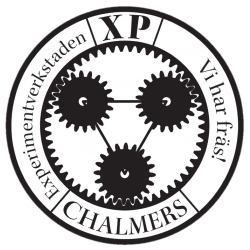3D PRINTERS
In addition to XP's eminent workshop, there are also five 3D printers above the prototype lab that are also part of our equipment. In these, authorized members can create everything from fancy shapes to mechanical prototypes with functional moving parts. To become competent, a shorter course should be completed as needed. The registration link to this can be found here or under the tab "courses", where also registration links to our other courses are available. If you want to take part of our course material you will find it here, or under "course materials" in the submenu to "courses".
The printers we provide are:
About 3D Printing
3D-Printing is a so-called additive manufacturing technique that builds a model by adding materials. This is unlike, for example, milling and turning, which are examples of subtractive techniques where you instead remove, or fell, material. The most common type of 3D printer is FDM which stands for Fused Deposition Modeling where it heats up a material to its melting point and extrudes it on a flat surface. The three-dimensional model is thus built up using several layered strings of materials that are applied to each other.
The nozzle that extrudes the material is moved using Step Motors, which in turn is controlled by a control computer. Usually for one over their model to this control computer via USB or SD card, but there is also software that makes decentralized printing through network-based services. For our printers, however, it is SD card as well as USB stick that applies.
To turn your model into code that the printer's control system understands, special software is required with a so-called "slicer". This first makes about your STL (Standard Tessellation Language) file to individual horizontal layers and identifies each layer's in-and-outside. Next, a machine path is generated that the print head will follow, where individual settings such as temperature and speed have been taken into consideration. Finally, this path is translated into sequential code (usually G-code) that the printer interprets when printing. Some common softwares for this are Slic3r (used among others by Prusa), Cura (used much by Ultimaker) as well as Simplify3D. The former two are freeware, while Simplify3D requires license.
Typically, rigid thermoplastics such as PLA (Polylactic Acid), ABS (Acrylonitrile Butadiene Styrene), Nylon, PET (Polyethylene Terephthalate) are used, but there are also flexible materials such as NinjaFLEX. These materials are wrapped up on rolls and are called filaments. PLA is by far the simplest material to work with and the only thing that can be used in the experiment Workshop's printers without special instructions. More information about the different materials can be found here.

